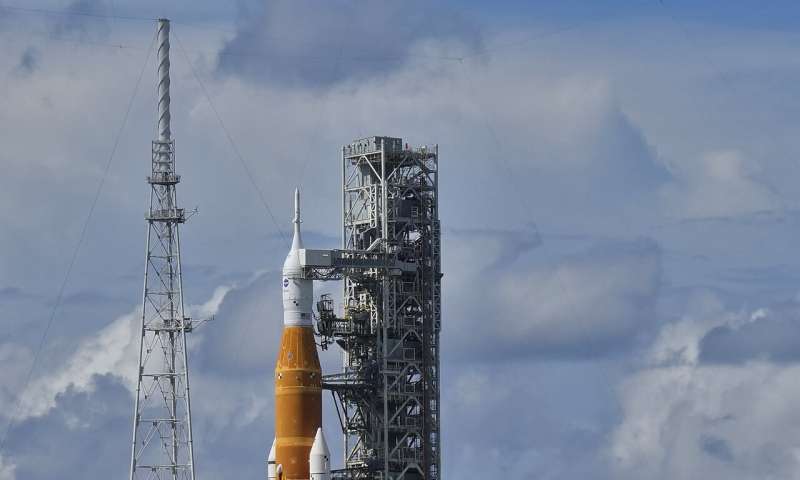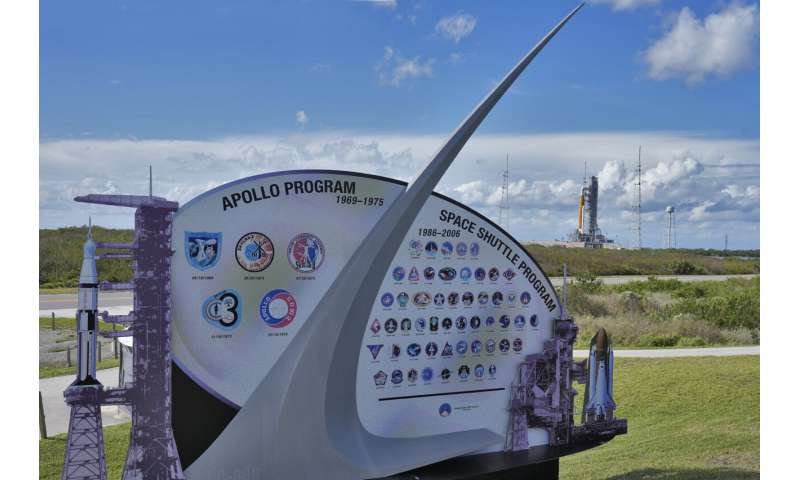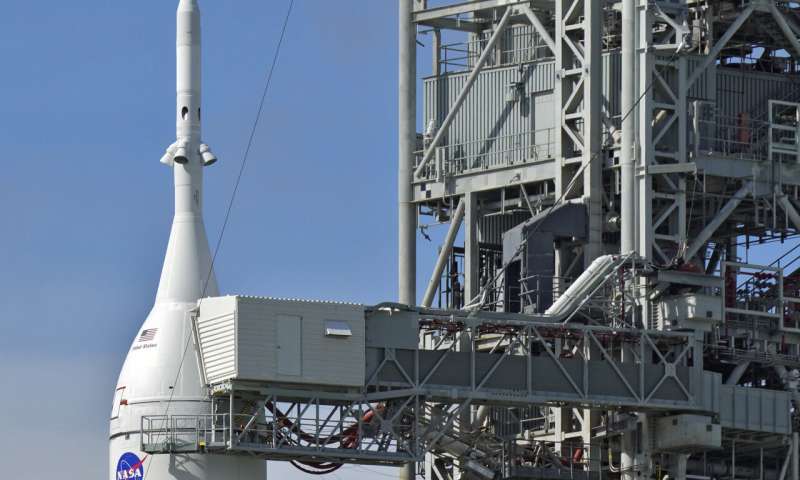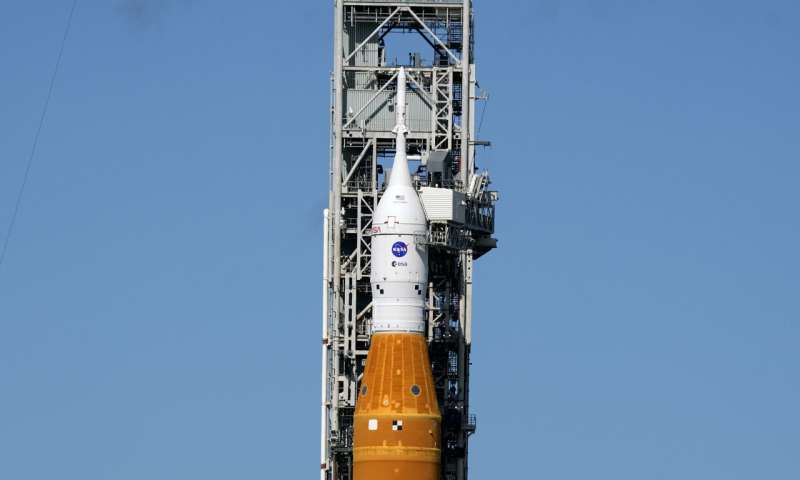NASA’s moon rocket needs only minor repairs after enduring a hurricane at the pad and is on track for its first test flight next week, a top official said Friday.
“Right now, there’s nothing preventing us” from attempting a launch on Wednesday, said NASA’s Jim Free, an associate administrator.
The wind never exceeded the rocket’s design limits as Hurricane Nicole swept through Kennedy Space Center on Thursday, according to Free. But he acknowledged if the launch team had known in advance that a hurricane was going to hit, they likely would have kept the rocket indoors. The rocket was moved out to the pad late last week for its $4.1 billion demo mission.
Gusts reached 100 mph (160 kph) atop the launch tower, but were not nearly as strong farther down at the rocket. Computer models indicate there should be no strength or fatigue issues from the storm, even deep inside the rocket, Free noted.
NASA had been aiming for an early Monday launch, but put it on hold for two days because of the storm.
The 322-foot (98-meter) rocket, known as SLS for Space Launch System, is the most powerful ever built by NASA. A crew capsule atop the rocket, with three test dummies on board, will shoot for the moon—the first such flight in 50 years when Apollo astronauts last visited the moon.

NASA’s new moon rocket sits on Launch Pad 39-B Friday, Nov. 11, 2022, in Cape Canaveral, Fla. Credit: AP Photo/Chris O’Meara 
A sign showing NASA’s Apollo and Space Shuttle programs is shown near NASA’s new moon rocket as she sits on Launch Pad 39-B Friday, Nov. 11, 2022, in Cape Canaveral, Fla. Credit: AP Photo/Chris O’Meara 
NASA’s new moon rocket sits on Launch Pad 39-B Friday, Nov. 11, 2022, in Cape Canaveral, Fla. Credit: AP Photo/Chris O’Meara 
NASA’s new moon rocket sits on Launch Pad 39-B Friday, Nov. 11, 2022, in Cape Canaveral, Fla. Credit: AP Photo/Chris O’Meara 
NASA’s new moon rocket sits on Launch Pad 39-B Friday, Nov. 11, 2022, in Cape Canaveral, Fla. Credit: AP Photo/Chris O’Meara
NASA wants to test all the systems before putting astronauts on board in 2024 for a trip around the moon.
Two previous launch attempts, in late summer, were thwarted by fuel leaks. Hurricane Ian also forced a return to the hangar at the end of September.
© 2022 The Associated Press. All rights reserved. This material may not be published, broadcast, rewritten or redistributed without permission.
Citation:
NASA: Moon rocket endured hurricane, set for 1st test flight (2022, November 12)
retrieved 12 November 2022
from https://phys.org/news/2022-11-nasa-moon-rocket-hurricane-1st.html
This document is subject to copyright. Apart from any fair dealing for the purpose of private study or research, no
part may be reproduced without the written permission. The content is provided for information purposes only.
Source link
Author





